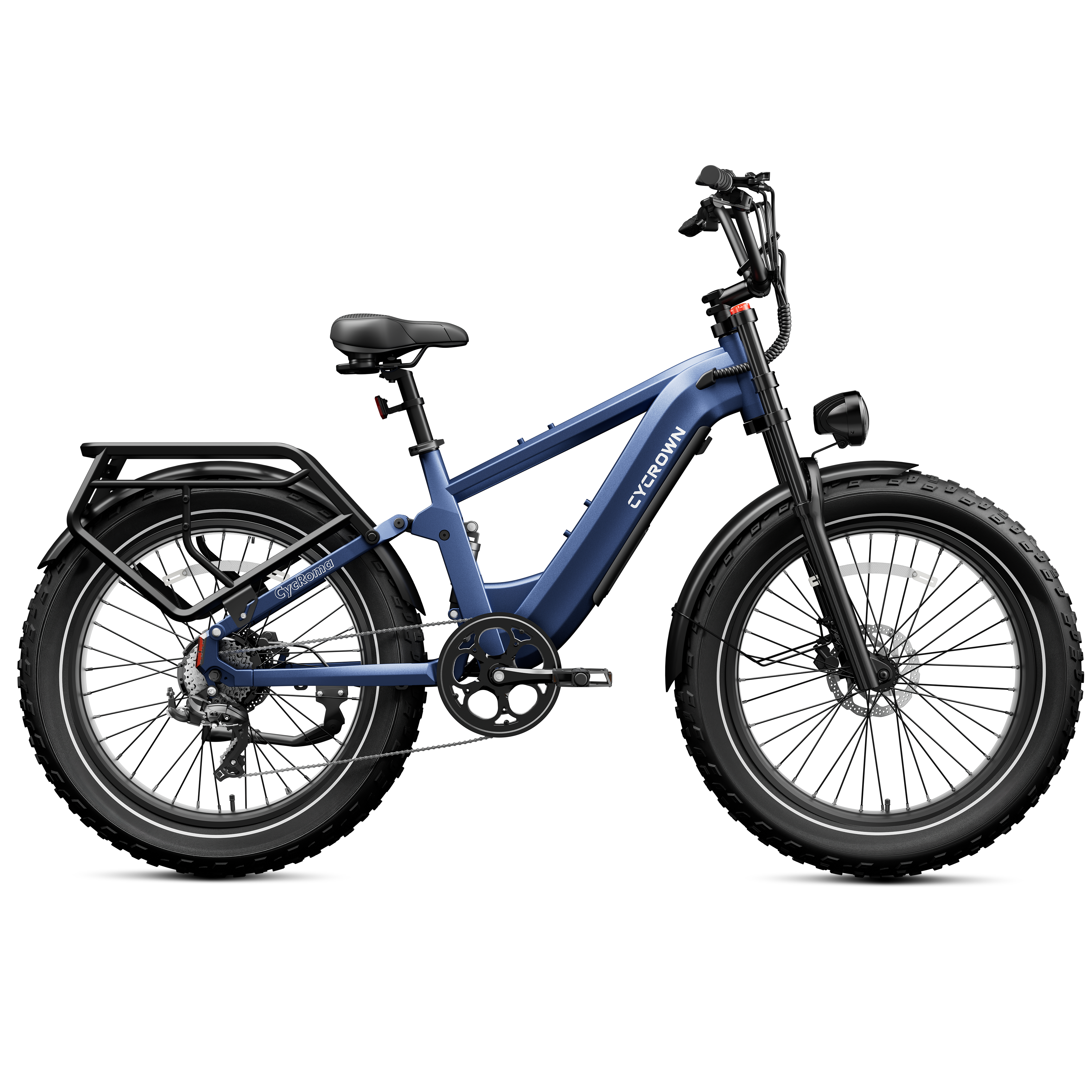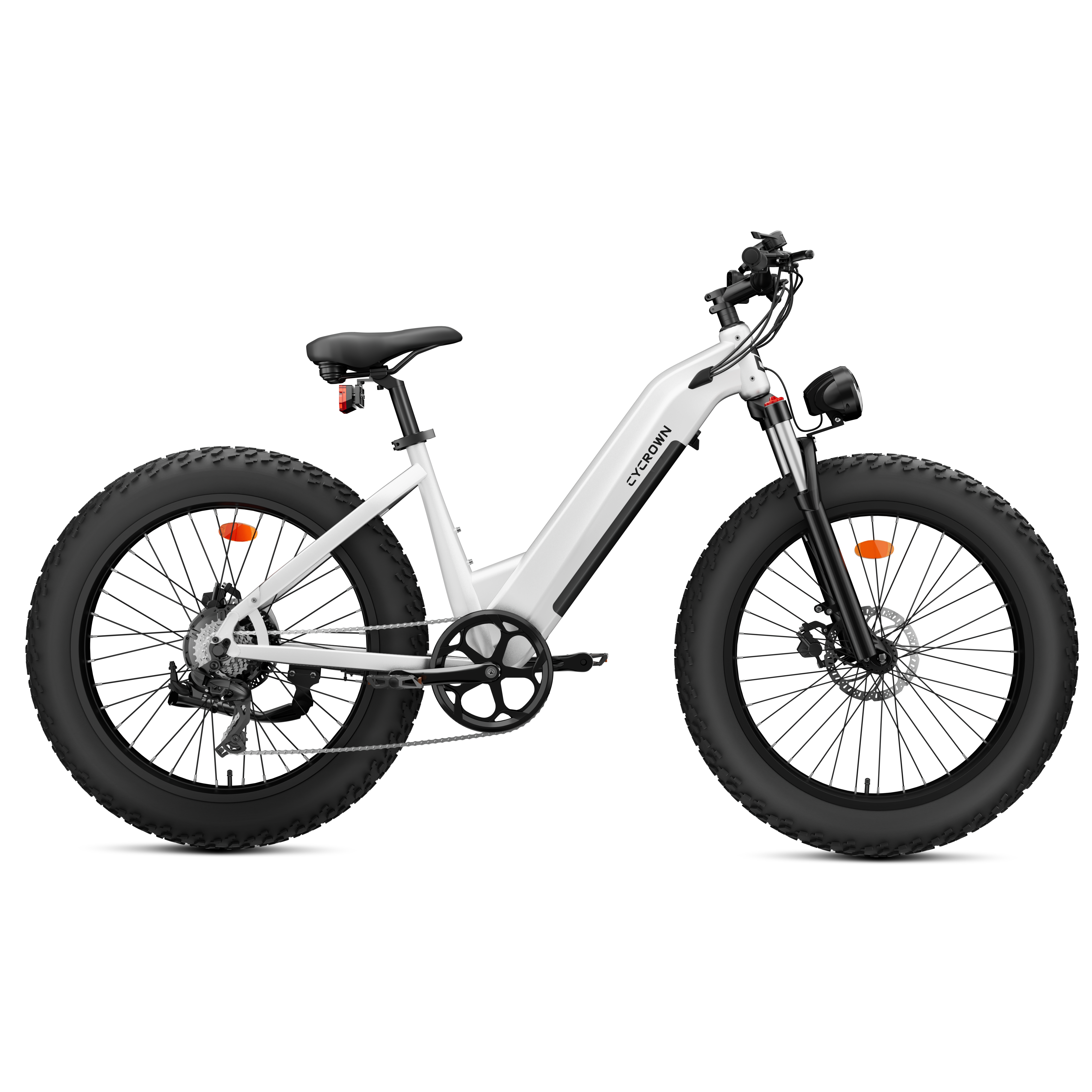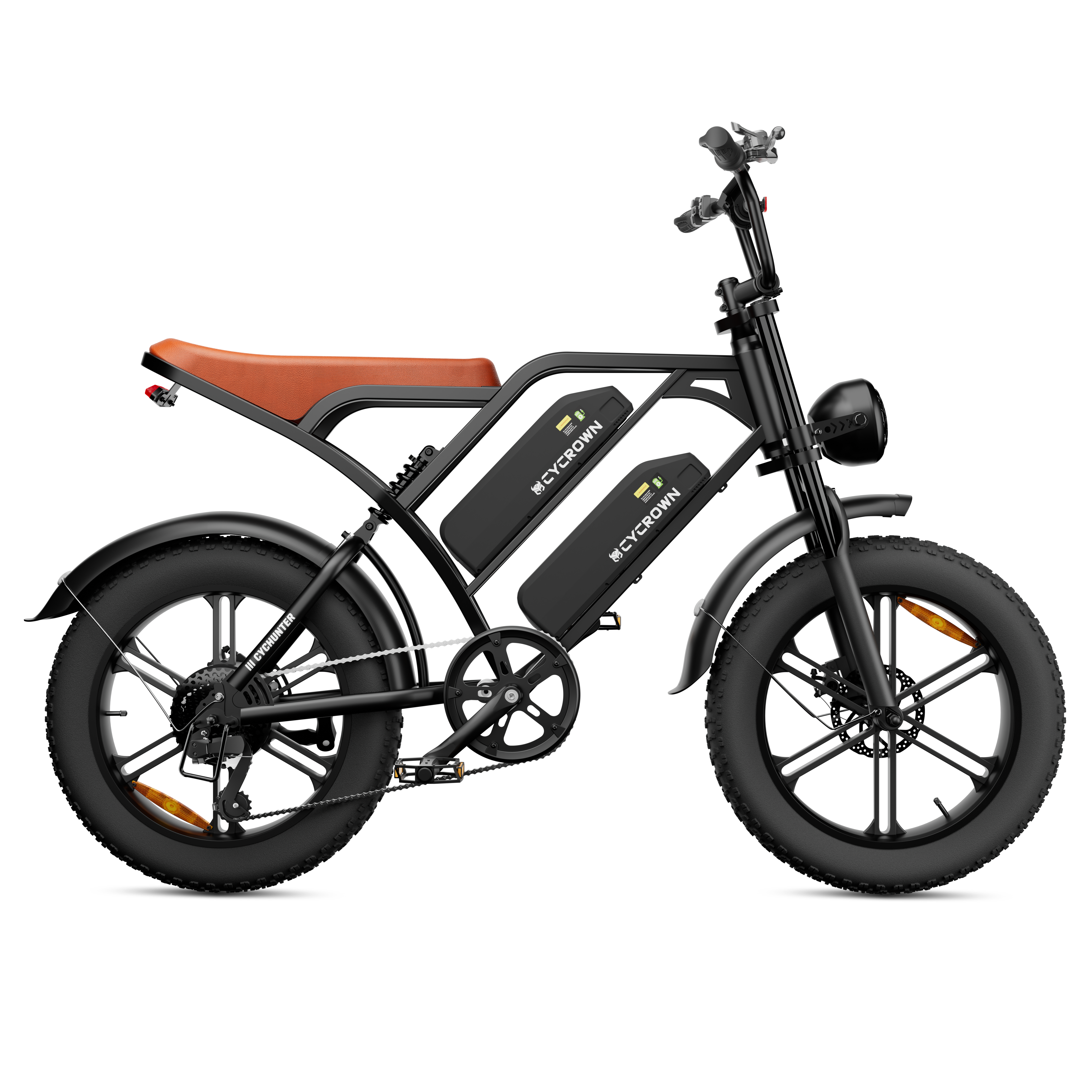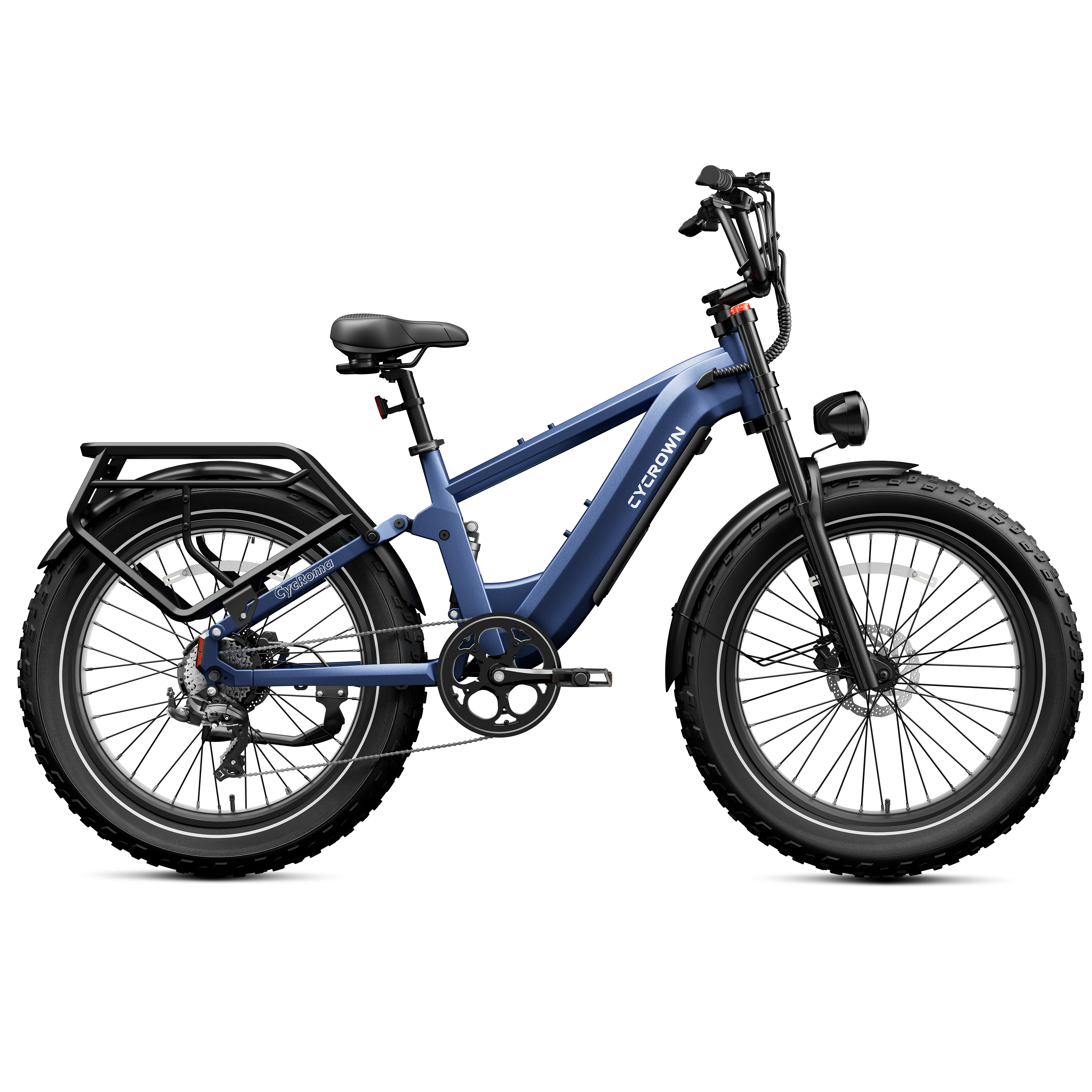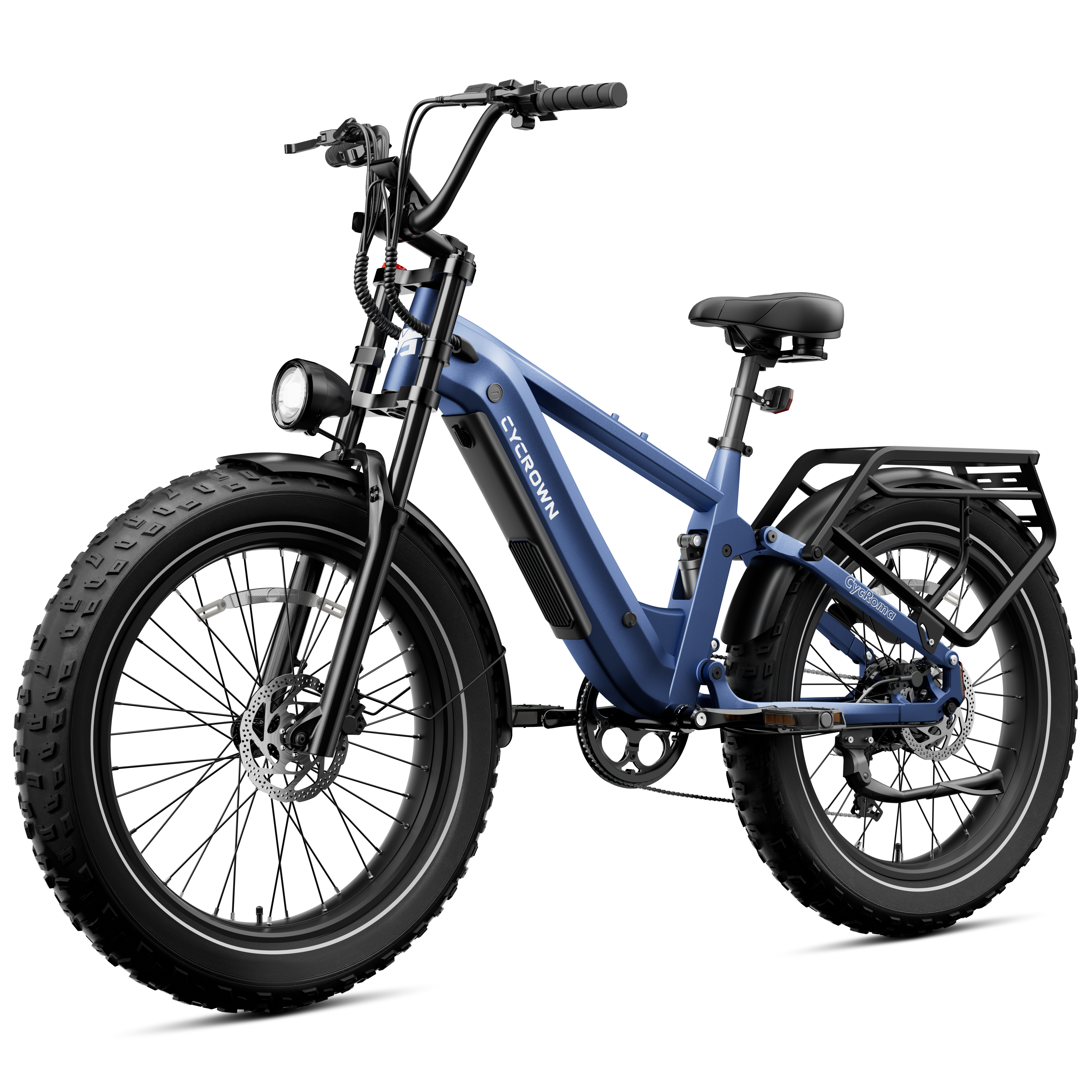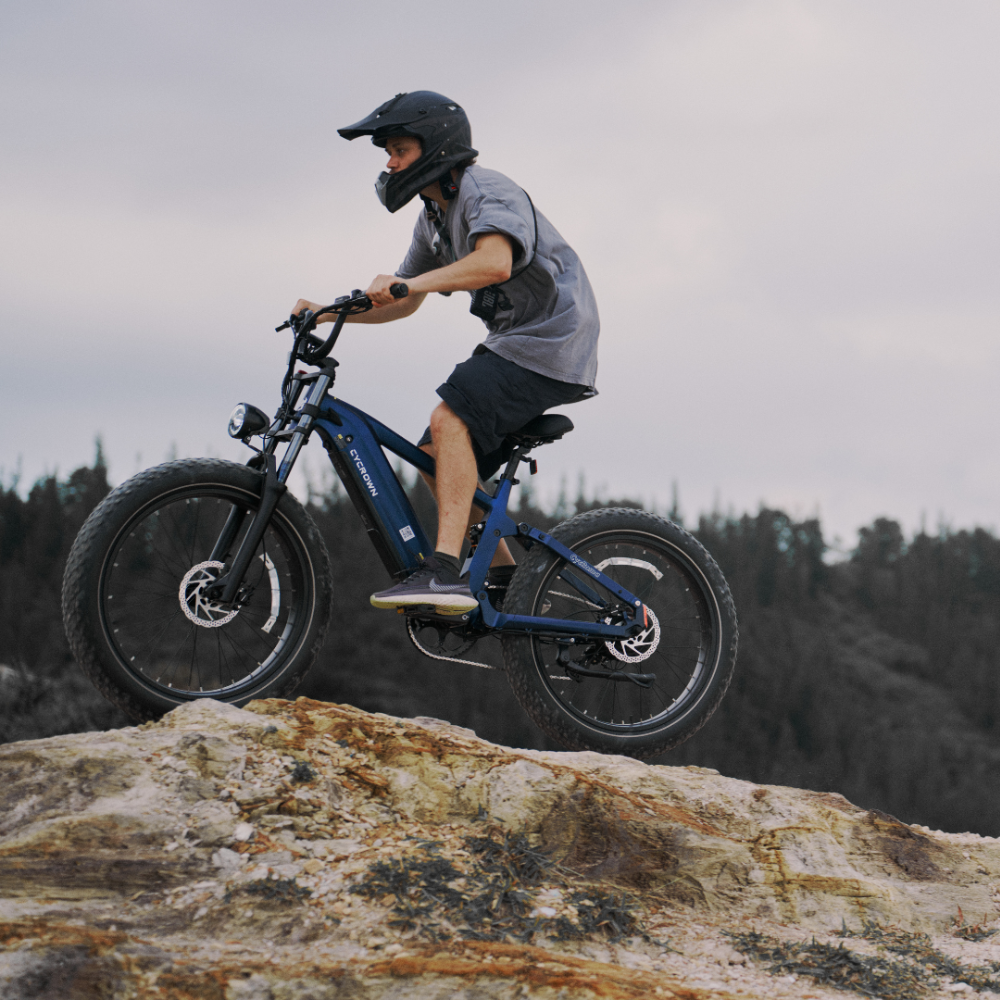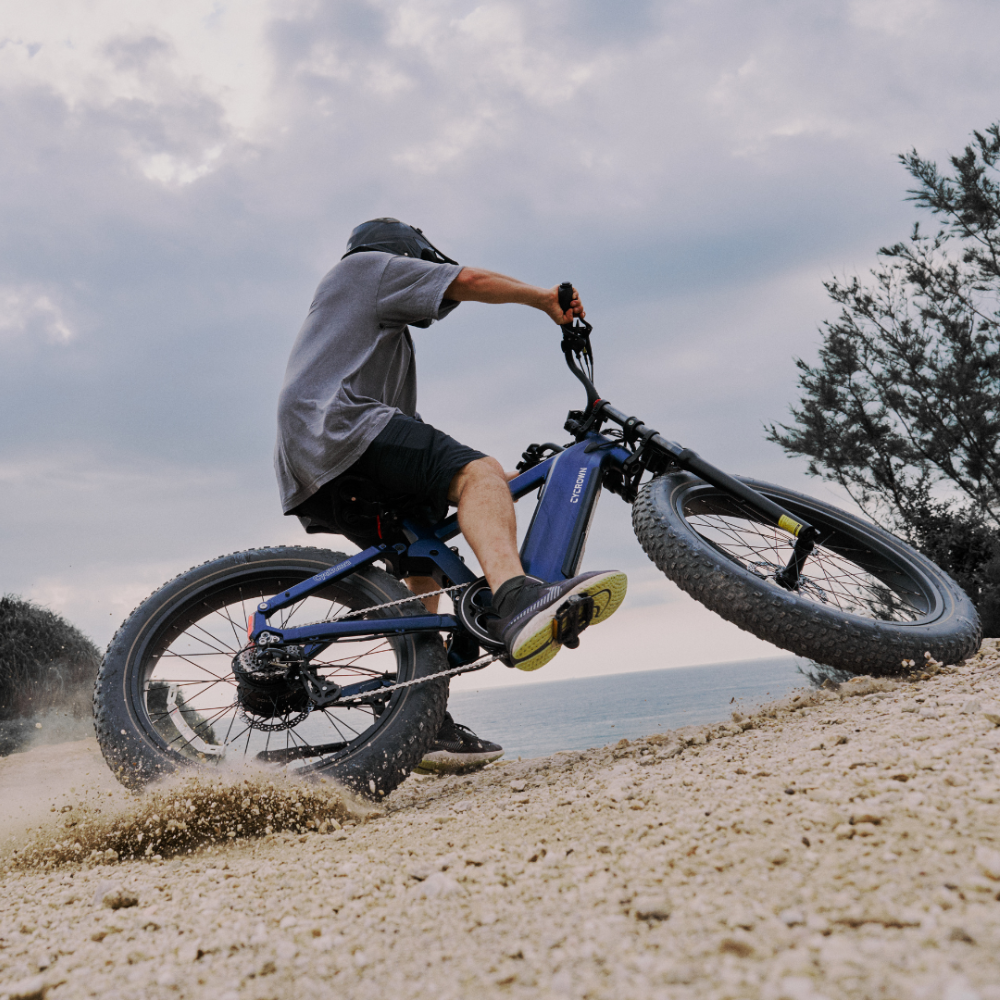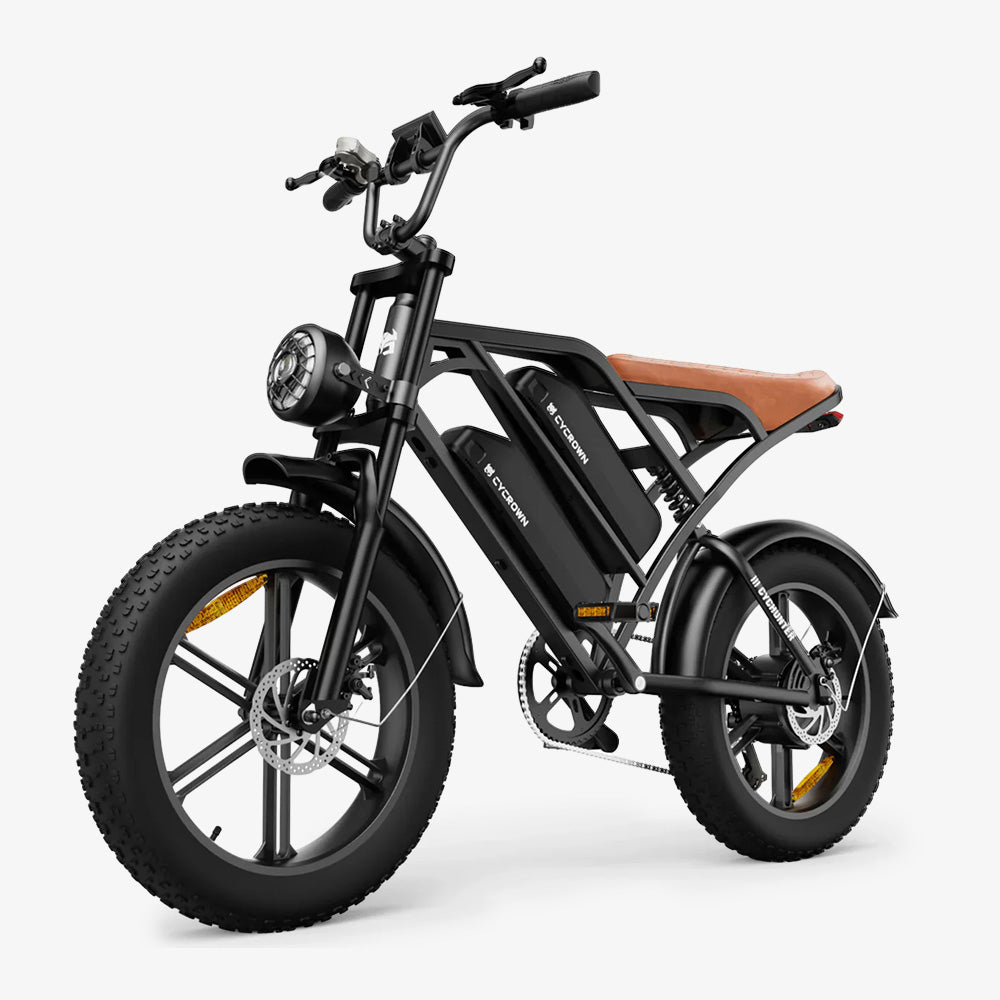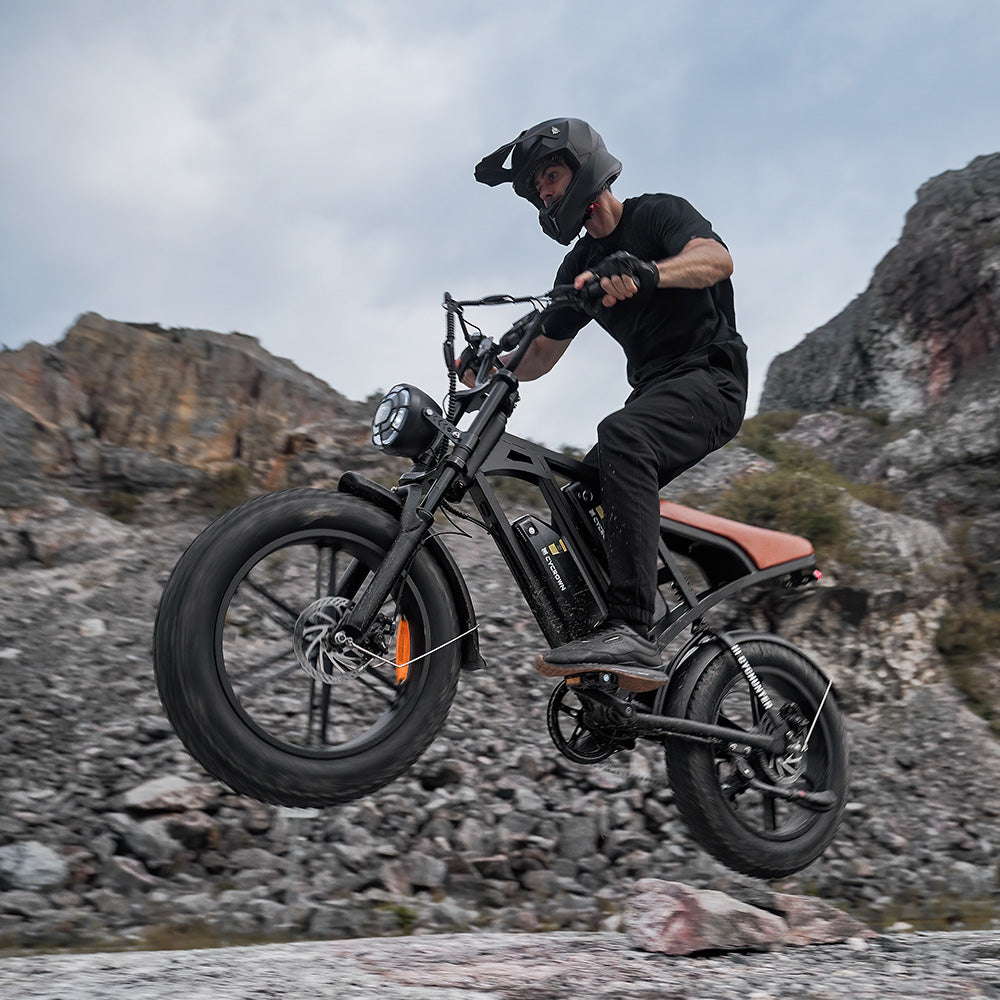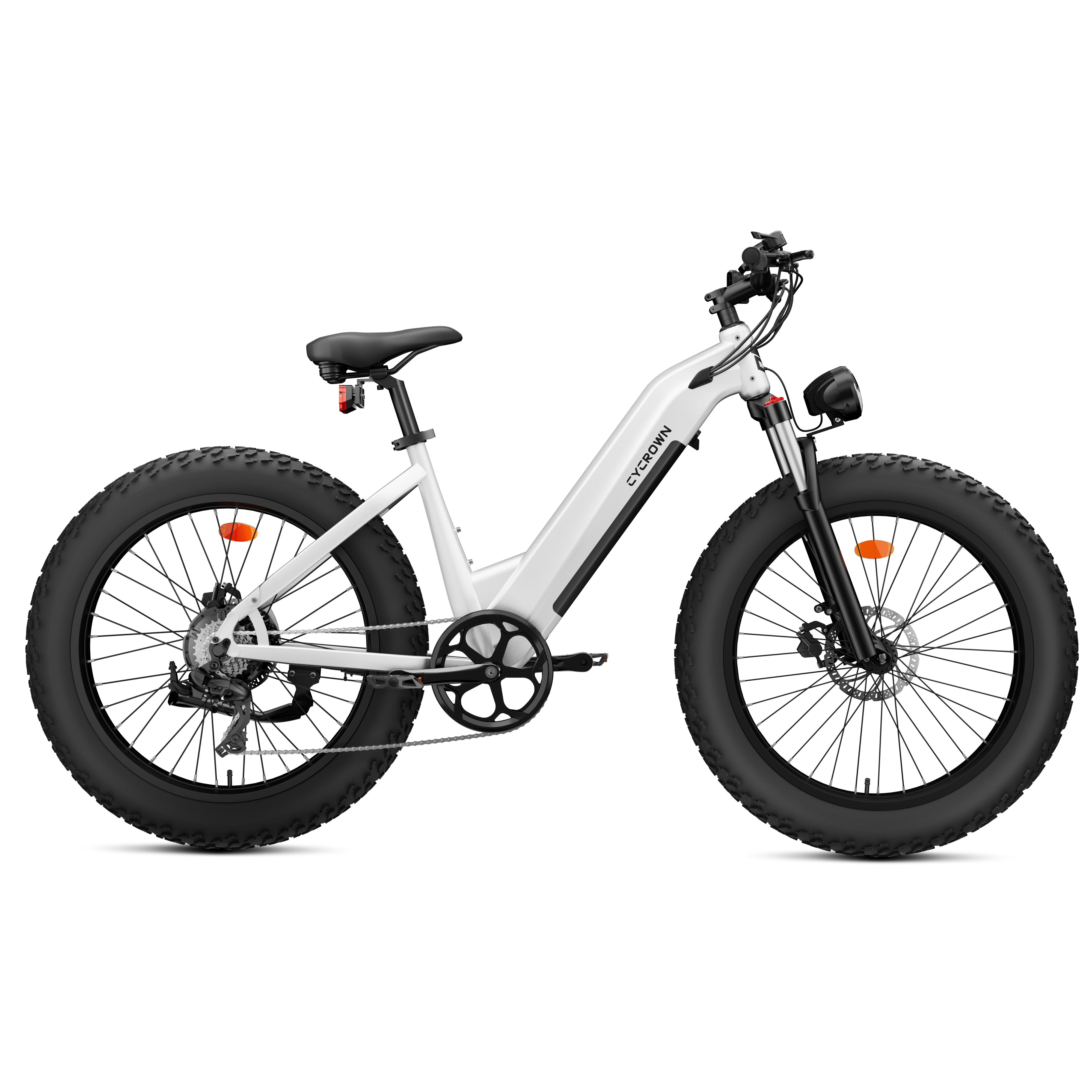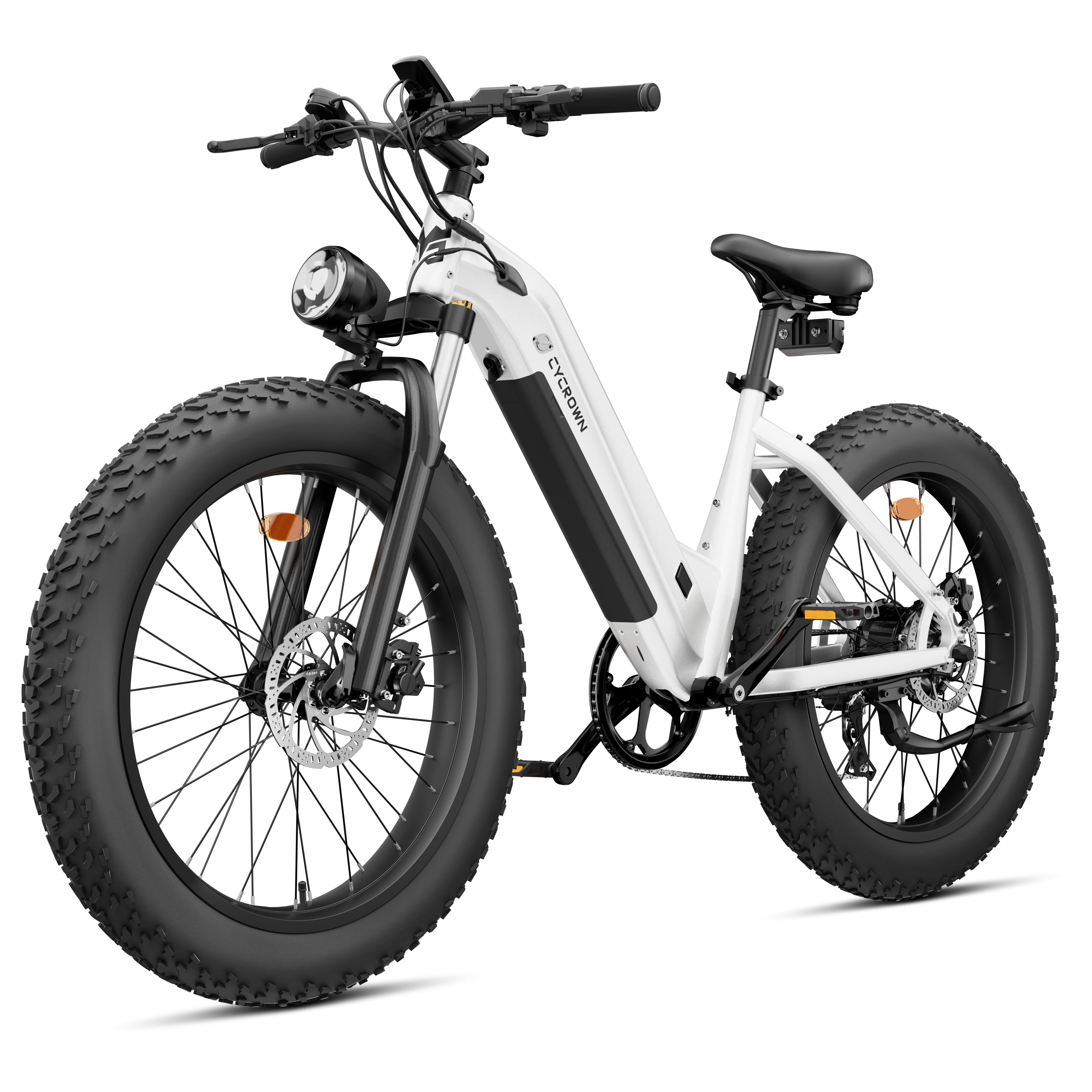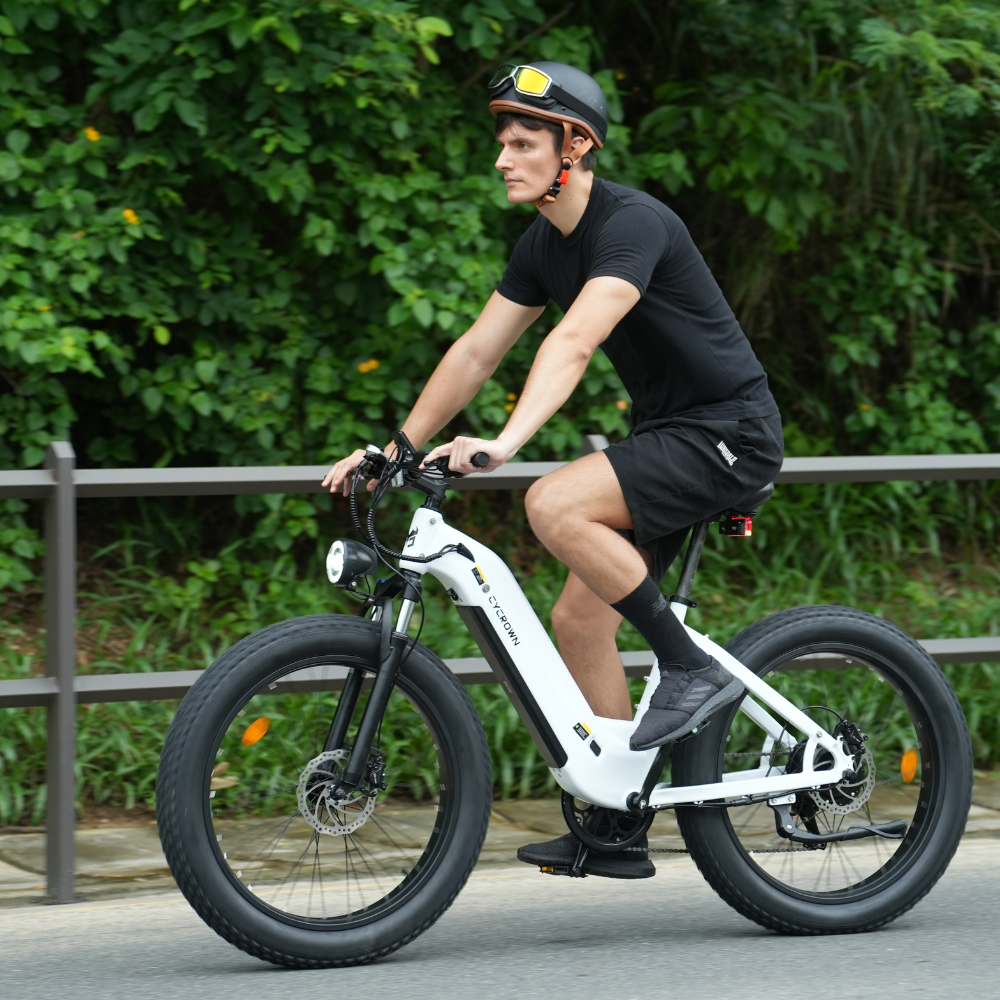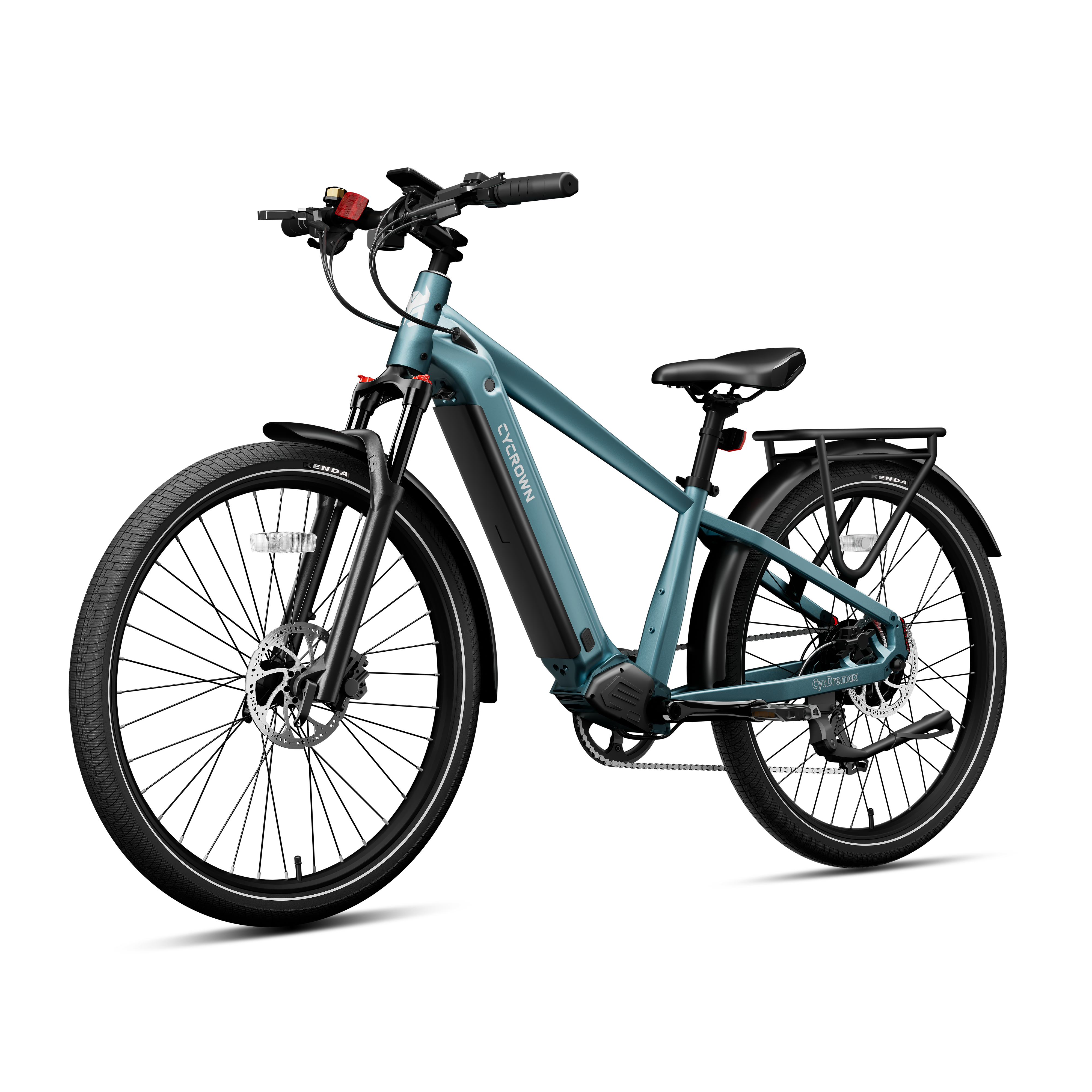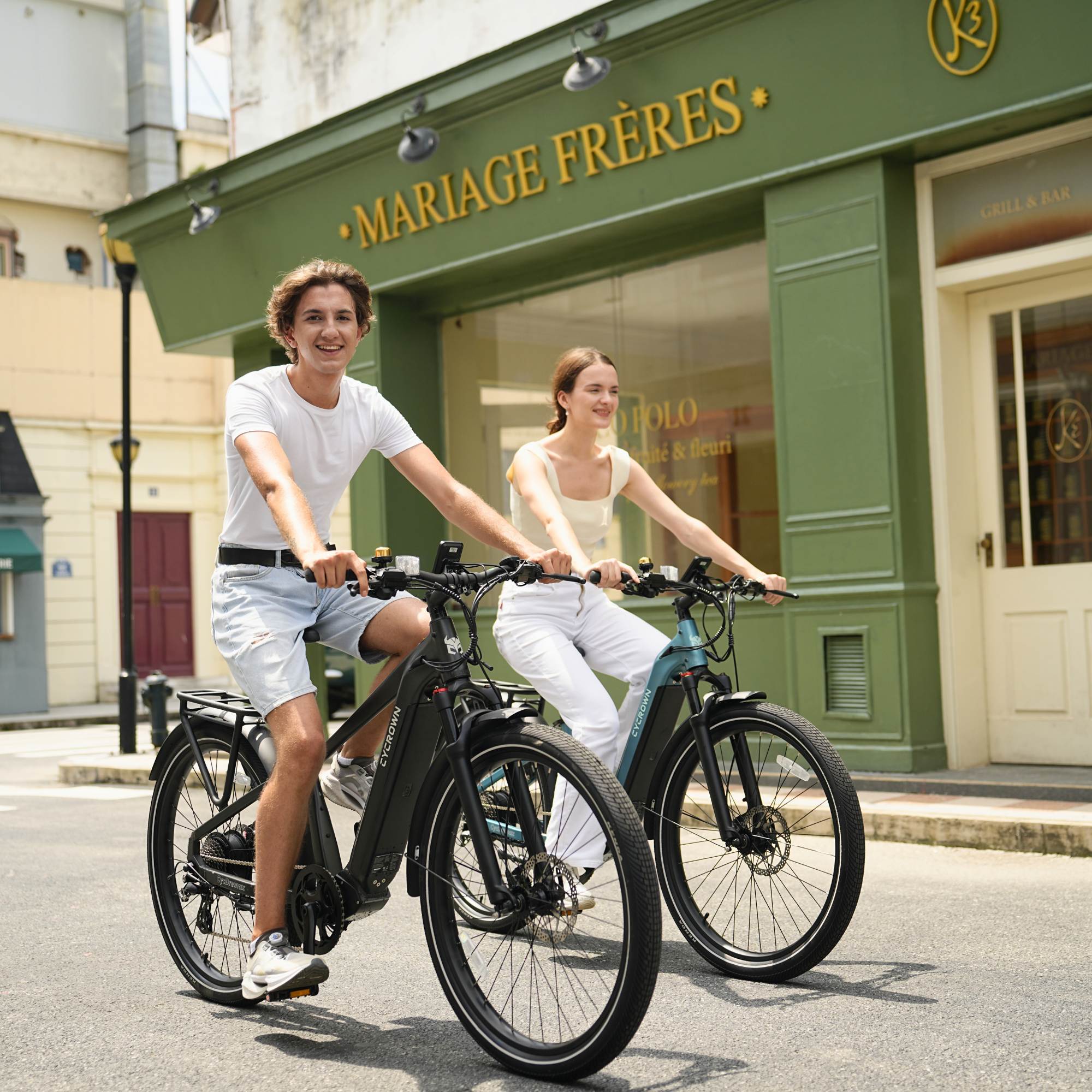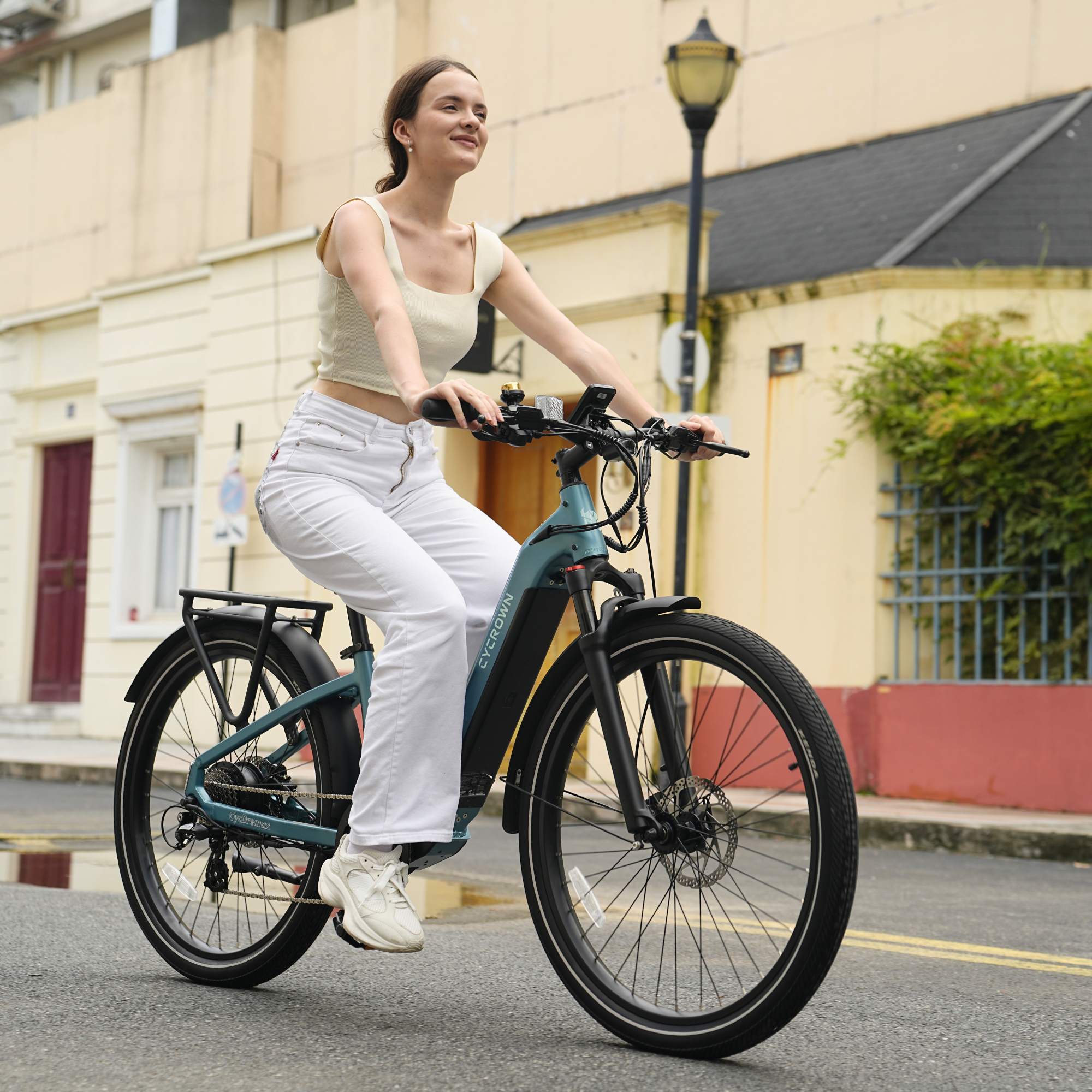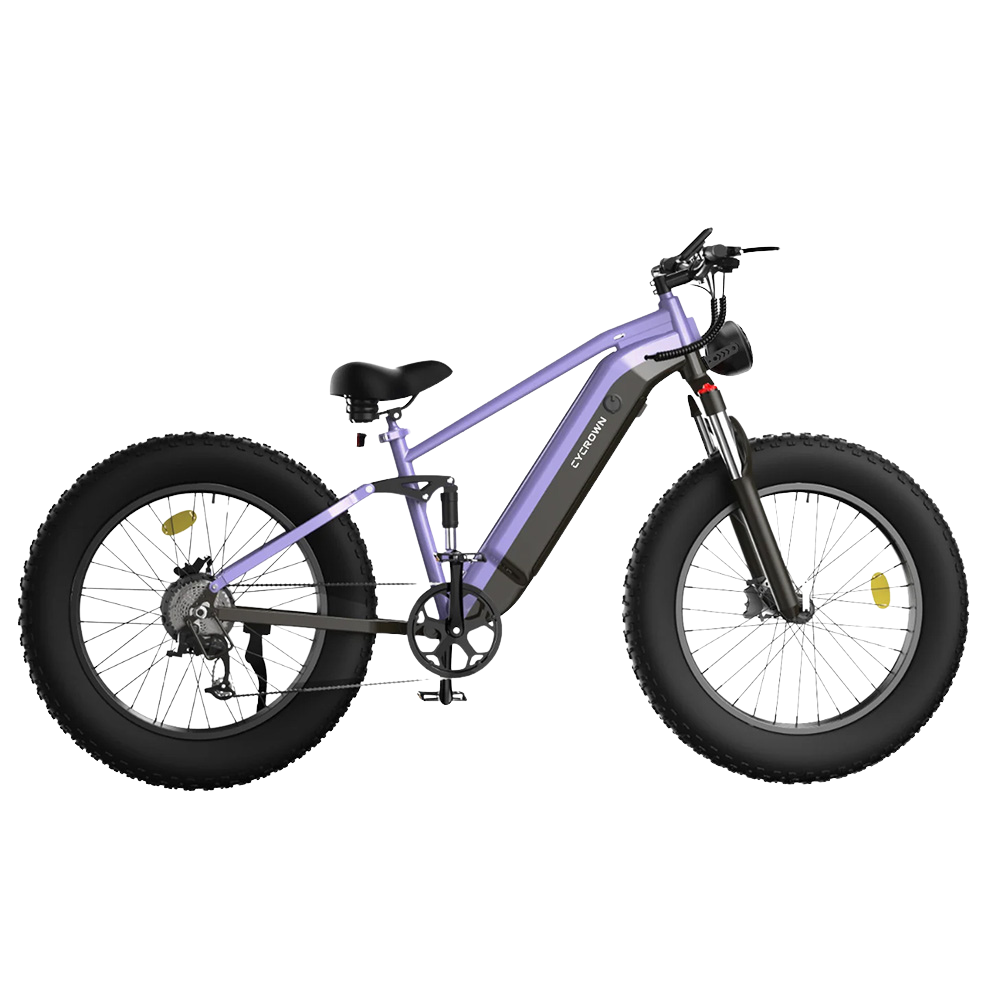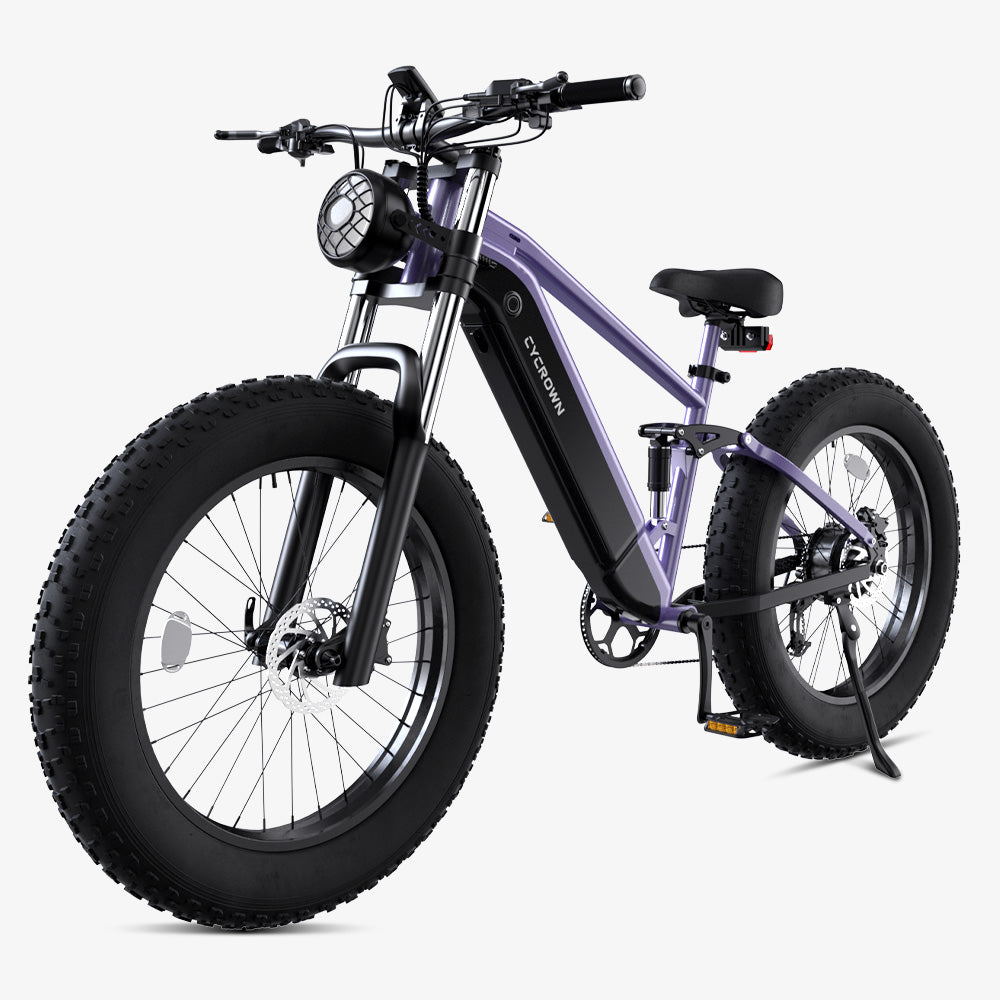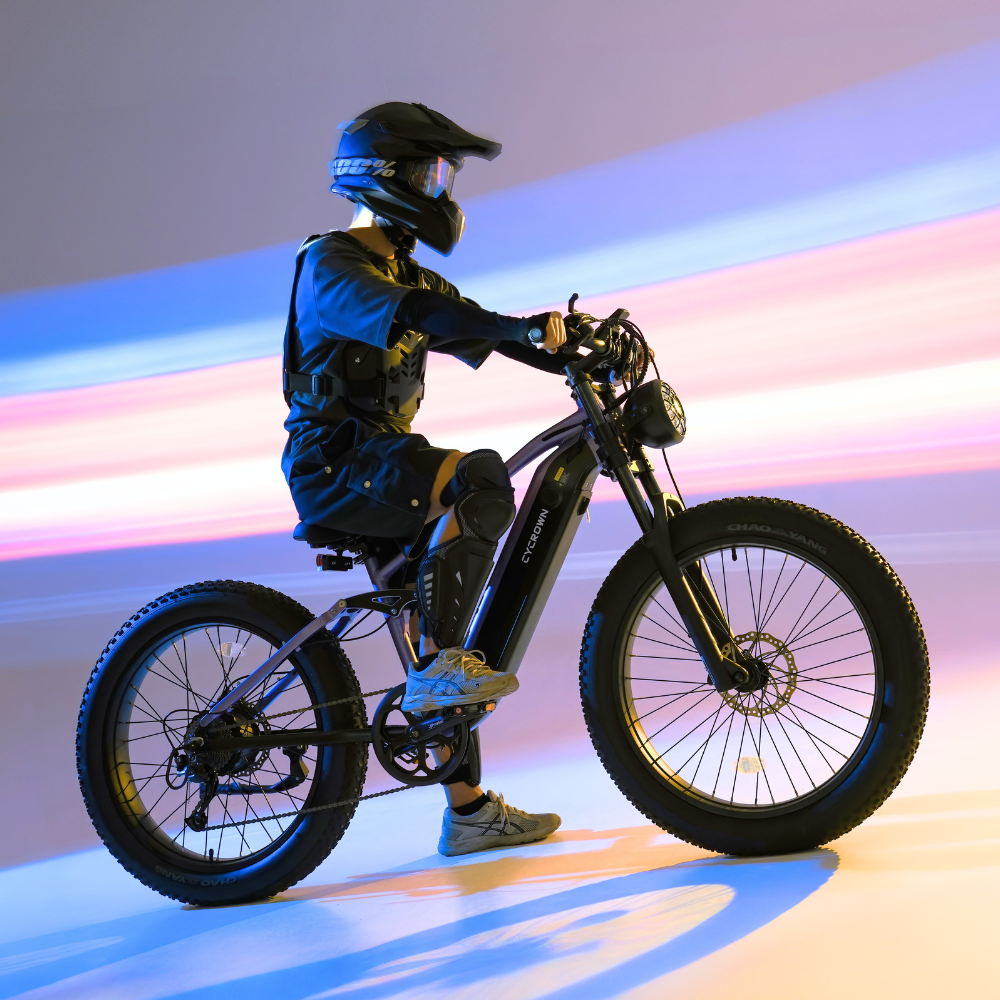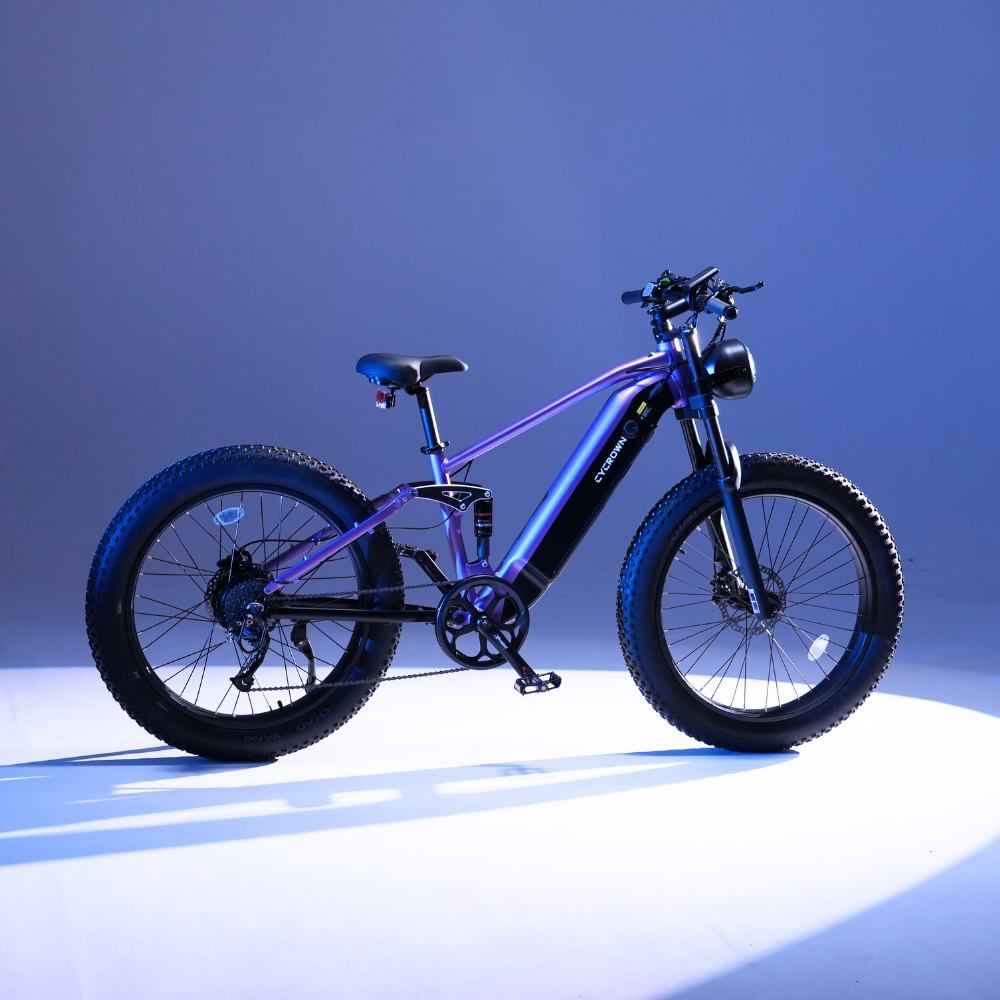Most electric bicycles have top speeds ranging from about 15.5 mph to 28 mph, depending on their class and features.
Different types of electric bikes have different limits. For example, Class 1 and 2 e-bikes often top out at 20 mph, while Class 3 models can reach up to 28 mph.
Some high-performance electric bikes, built for speed and off-road use, can go even faster, but may not be legal on public roads.
In this guide, we’ll break down electric bike classes, what determines their top speed, and the fastest e-bike options you can buy today.
Quick Takeaways 💡:
- Electric bike top speed depends on class, motor, and local laws.
- Class 1 e-bikes max at 20 mph with pedal assist only.
- Class 2 e-bikes also cap at 20 mph but allow throttle use.
- Class 3 e-bikes reach up to 28 mph with pedal assist.
- Know your local speed limits and always ride safely.
What Determines an Electric Bike's Top Speed?
Several main factors directly affect how fast your electric bike can go. Each part, from the motor to the path you ride on, helps set your top speed.
1. Motor Power (Wattage)
The wattage of your electric bike's motor is one of the biggest things that controls your top speed.
- 250W to 500W motors are standard on most basic e-bikes. They are found on Class 1 and Class 2 bikes and usually let you reach up to 20 miles per hour using motor power alone.
- 750W motors or higher are often on Class 3 bikes. These can help you get to speeds up to 28 miles per hour while pedaling.
- A higher wattage means more pulling power for hills or heavy loads, but speed limits may apply depending on U.S. or local law.
The motor’s power keeps the bike running strong, especially when you pick up speed or carry extra weight.
2. Battery Voltage (36V vs. 48V vs. 52V)
The voltage of your e-bike’s battery affects both speed and performance.
- 36V batteries are common for budget and everyday use bikes. They offer steady performance but may feel slow or weak uphill.
- 48V and 52V batteries provide more power and better acceleration. You will notice quicker starts and a stronger boost on steep climbs.
- Higher voltage does not always mean a higher top speed if your motor is limited, but it can help you maintain close to the max speed for longer.
Use the table below to compare:
|
Battery Voltage |
Acceleration |
Typical Use |
|
36V |
Moderate |
City, flat, light use |
|
48V |
Fast |
Commuting, mixed hills |
|
52V |
Fastest |
High performance |
3. Rider & Terrain Factors
Your weight, the type of ground, and conditions like wind also change your top speed.
- Heavier riders might notice a slight drop in speed, especially on smaller motors or low-voltage batteries.
- Hills will slow you down if your motor is not strong enough. Wind that blows against you can make the bike work harder and cut your speed.
- Smooth, paved roads allow you to ride faster, while rough trails or gravel can lower your speed.
Here are some things that can affect your ride:
- Your weight: more weight usually means slower acceleration and a lower top speed.
- Steep hills: need more power to keep your speed up.
- Wind direction: headwinds slow you down, while tailwinds can help you go faster.
- Road surface: smoother surfaces are better for maintaining high speed.
Electric Bike Top Speed by Class (1, 2, 3)

Electric bikes are divided into classes based on how fast they can go and how their motors work. Knowing the class helps you pick the right e-bike for your daily ride and know where you can use it.
Class 1 E-Bikes (Pedal-Assist Only, 20 MPH)
Class 1 e-bikes have a motor that only gives you a boost when you pedal.
- Top Speed: 20 mph (about 32 km/h)
- How It Works: There is no throttle. The motor only works when you are pedaling.
- Where You Can Ride: You can use Class 1 on bike paths, city streets, and many parks. These e-bikes are usually allowed wherever you can ride a regular bicycle.
Class 1 e-bikes are popular for everyday rides and exercise. They are simple and quiet, making them a good fit for new riders and those who do not want extra rules or special paperwork.
In most areas, you do not need a license, registration, or insurance for a Class 1 e-bike. These bikes are also legal for younger riders, but some brands set a minimum age, usually 16.
Class 2 E-Bikes (Throttle-Assist, 20 MPH)
Class 2 e-bikes give you a choice to use a throttle, so you can cruise without pedaling if needed.
- Top Speed: 20 mph (about 32 km/h)
- How It Works: A throttle lets you use the motor with or without pedaling.
- Best Use: Great for stop-and-go city traffic and for people who want a break from pedaling.
These e-bikes are good for people who have hills on their route or need help starting from a stop. They are also a favorite for riders with knee pain or those who just want an easy ride.
Be aware, not all bike paths and trails allow throttle bikes. Some parks or trails limit where you can use Class 2. You do not usually need a license, but you should always check your local rules.
Class 3 E-Bikes (Pedal-Assist, 28 MPH)
Class 3 e-bikes are faster pedal-assist bikes made for people who need extra speed.
- Top Speed: 28 mph (about 45 km/h)
- How It Works: The motor helps only when you are pedaling, not with a throttle.
- Features: Most come with a speedometer and must stop motor support above 28 mph.
Class 3 bikes are best for commuters or those who have longer rides on roads. The extra speed lets you keep up with traffic, but these bikes often cannot go on most bike trails or paths for safety reasons.
In many places, you must be at least 16 years old to ride a Class 3 e-bike. A helmet may also be required by law. Always check your local regulations before you buy or use a Class 3 e-bike.
📌Also Read: The 8 Common Types of Ebikes: A Full Guide
What Affects Electric Bike Top Speed on the Road?

Many things affect how fast your electric bike goes while you ride. These include your own weight, the weight of the bike, what you are carrying, road and weather conditions, and even how well your bike is taken care of.
Key factors that impact your electric bike's top speed:
- Rider and Cargo Weight: The heavier you and your cargo are, the harder your motor has to work. More weight usually means slower speeds on hills and flat roads.
- Bike Weight: Heavier bikes take more power to move, especially when starting or going uphill.
- Terrain: Riding on flat, smooth roads lets you go faster. Steep hills or rough surfaces slow you down, since the motor and battery use more power to keep you moving.
- Weather: Wind, rain, or very hot and cold days can lower your top speed. Headwinds make you work harder, while wet ground makes wheels lose grip.
- Tire Choice and Pressure: Wider, knobby tires grip better off-road but slow you down on pavement. Keeping your tires pumped up to the right pressure helps you roll faster.
- Maintenance: A clean, well-oiled bike runs better. Dirty chains and low batteries can reduce your speed.
Speed Tips Table
|
Factor |
Effect on Speed |
|
Heavy rider/cargo |
Slower |
|
Flat, smooth road |
Faster |
|
Hills, rough roads |
Slower |
|
Headwind/rain |
Slower |
|
Good maintenance |
Faster |
Can You Increase Electric Bike Top Speed?
You can make most electric bikes go faster, but it often takes changes to your bike's hardware or software. These upgrades can have risks and may not be legal in all places.
Common Speed Mods (Pros & Cons)
Some popular methods for raising e-bike top speed include changing computer settings, upgrading parts, or making small gear changes.
Ways to increase top speed:
-
Tuning the controller: Many electric bikes have controllers with speed limits that can be changed. Adjusting these settings can unlock higher speeds.
- Pros: Quick and cheap to do, just a software change
- Cons: Often voids your warranty. Some bikes might limit you to only certain speeds.
-
Upgrading the motor or battery: Swapping in a stronger motor or higher voltage battery helps your bike go faster, especially on hills.
- Pros: Clear improvement to speed and power
- Cons: Costly parts. Could put extra strain on your bike’s frame and wiring.
-
Changing wheel size: Using slightly larger wheels can boost speed a bit.
- Pros: Simple, sometimes cheap
- Cons: Minor impact on speed. Might affect the accuracy of your speedometer.
Not every mod works for every bike, and some methods need special tools or skills.
Legal & Safety Risks
Making your e-bike faster is not always allowed, and can create safety, insurance, and legal issues.
Key risks to know:
- In most places, removing or changing the speed limiter is illegal. Riding above set limits could result in fines or having your bike banned from bike lanes and roads.
- If you crash or get stopped, your insurance might not cover you due to unauthorized changes.
- Riding faster than your bike was designed for makes accidents more likely. Higher speeds can stress brakes, tires, and other parts, leading to failures.
It's important to check your local laws before making changes, and always think about your safety and the safety of others around you.
Fastest Electric Bikes (Beyond Class 3?)

Electric bikes can go faster than typical city e-bikes. Some are built for extra speed and fall into special legal categories. Others are for private areas only and not allowed on public roads.
Speed Pedelecs (45+ KM/H / 28+ MPH)
Speed pedelecs are high-speed electric bikes that can reach speeds over 28 miles per hour or 45 kilometers per hour.
These bikes are not seen as regular e-bikes under the law. Instead, they are usually classified as mopeds or motorcycles in many places.
Because of this, you often need a driver’s license, registration, and sometimes insurance if you want to ride one on the street.
Common features:
- Max speeds around 28 to 30 mph (45 to 50 km/h)
- More powerful motors than most city e-bikes
- Lights, mirrors, and number plates may be required by law
Popular models include the Stromer ST5 and the Riese & Müller Supercharger2. Local laws always apply, so you need to check what is legal in your area.
Off-Road/Performance E-Bikes
Some electric bike models are made for off-road or private land use. These bikes can go much faster than what is allowed on public roads.
Key points about off-road performance e-bikes:
- Top speeds can be 35 to 50 mph (56 to 80 km/h) or even higher
- Motors can range from 1,000W to over 10,000W for extreme cases
- No speed limiters like street-legal bikes
- Riding on public roads is not allowed without registration, insurance, and a license
Examples include the Hi Power Cycles Revolution X9 and the Delfast Top 3.0i. These bikes are best for riders who want high speed on private property, trails, or race tracks. Always follow local rules and safety guidelines when riding high-speed e-bikes.
Final Thoughts: Electric Bike Top Speed for Every Rider
When thinking about electric bike top speed, start with your main use. For city trips or daily rides, most e-bikes reach between 20–28 mph. This is fast enough for most commutes and safe for shared paths.
E-bike classes matter.
- Class 1: Up to 20 mph, pedal assist only
- Class 2: Up to 20 mph, throttle and pedal assist
- Class 3: Up to 28 mph, pedal assist only
Choose your speed with care. Faster e-bikes or modified models can exceed 28 mph, but often require special rules or licenses. Always check your local laws before buying or riding a high-speed e-bike.
Keep in mind, speed can affect battery life and how far you can go on a charge. Riding faster usually means your battery drains more quickly, and you may need to charge more often.
Your safety comes first. A helmet and following traffic laws help protect you, especially as speed increases. Try to match your e-bike’s speed to your comfort and road conditions at all times.
If you want the best balance, choose an e-bike class and top speed that fits your routine and feels easy to control. This helps you enjoy every ride and avoid problems down the road.
Electric Bikes You May Also Like 👍
Frequently Asked Questions
E-bikes follow different speed rules depending on their class and the laws of your state or country. Most have specific speed limits, and not all models or power ratings can legally reach higher speeds.
What’s the fastest legal e-bike speed?
The fastest legal speed for most e-bikes in the United States is 28 mph. This applies to Class 3 e-bikes, which can have pedal assistance up to this speed.
What is the top speed of an electric bike?
Some e-bikes can technically go faster, but most are designed to go between 15.5 mph and 28 mph. The limit depends on the e-bike’s class and where you ride.
How fast can eBikes go legally?
Laws usually set the maximum speed at either 20 mph or 28 mph, based on the bike’s classification. Check your local regulations, because rules can vary.
Can a 750W e-bike go 30 MPH?
A 750W e-bike may have the power to reach 30 mph under the right conditions. However, most are electronically limited to a lower speed to stay within legal limits.
Are Class 3 e-bikes allowed everywhere?
No, some cities or states ban Class 3 e-bikes from certain bike paths or trails. Always check local rules before riding a Class 3 e-bike in public areas.



